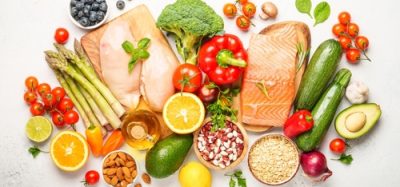Ten years in the food industry
Posted: 23 May 2007 | Huub Lelieveld, Unilever | No comments yet
The past ten years have seen many changes in both food science and technology as well as in food regulations. Contrary to the decades before then, most of it has been consumer driven. Consumers have become more aware of the influence of eating habits on their lives, in particular their health, and the food industry has happily tried to comply with their wishes with innovations, thereby stimulating research and development.
The past ten years have seen many changes in both food science and technology as well as in food regulations. Contrary to the decades before then, most of it has been consumer driven. Consumers have become more aware of the influence of eating habits on their lives, in particular their health, and the food industry has happily tried to comply with their wishes with innovations, thereby stimulating research and development.
The past ten years have seen many changes in both food science and technology as well as in food regulations. Contrary to the decades before then, most of it has been consumer driven. Consumers have become more aware of the influence of eating habits on their lives, in particular their health, and the food industry has happily tried to comply with their wishes with innovations, thereby stimulating research and development.
Several food scares prompted regulators to tighten legislation (often forced by politicians who in the face of elections want to show how well they protect consumers, their electorate). Tougher regulations require more evidence that products are safe, be it after the introduction of a new ingredient, the application of a new process or the discovery that traditional processes may be harmful, as in the case of acrylamide. Such testing often legally requires animal testing. Again, however, consumers have strong opinions: animal testing is not popular. This stimulates research to find alternatives. The new R&D framework of the EU, FP7, carries out research in alternative methods.
Consumers and health
Ten years ago, consumers became increasingly interested in the quality of food, in particular its freshness, assuming that fresh means that the food is healthy. They knew that too much heat destroys vitamins and antioxidants and they need these substances to reduce the risk of cancer and other health problems. What they did not know is that unprocessed (or mildly processed) food may contain relatively high concentrations of the nutrients, but that the bioavailability of these nutrients may be low. In addition, harmful microbes survive in and on unprocessed food and may survive milder-than-traditional processing of such food. Tougher hygiene regulations were needed to keep food poisoning incidents under control.
Interest on the rise, consumers started to realise that they may have shortage of folic acid which is known to prevent birth defects and calcium which is needed to maintain strong and healthy bones throughout later life. This meant big business for manufacturers of “nutraceuticals”, but the food industry wanted to get their share of the business and began to produce fortified food products by adding these highly desirable substances, similar to the traditional addition of vitamins A and D to margarines, so that consumers did not need to resort to swallowing cod-liver oil to prevent night-blindness or rachitis.
Allergenicity
It has been known for many years that peanuts can be highly dangerous to people with peanut allergens, but how many consumers knew that the “apple a day keeps the doctor away” may also cause severe allergic reactions? Today, manufacturers are faced with the fact that cleaning is not only important to meet the traditional hygiene requirements, but also for removing residues of products, if the same equipment is used for other products. If it cannot be guaranteed that allergens are absent, it must be declared on the label, but this does not make the manufacturer popular. The EC has recognised the problems and is funding research to improve quality of life for food allergic people.
Obesity, sugar and salt
Gradually European consumers realised the obesity problem and although portion size in Europe is still smaller than in the USA, the size has been increasing. Moreover, food in general contains too much salt. The food industry supplies the food and is therefore blamed for these problems. Correct or not, the food industry does not want to lose its customers and so complies with popular opinion. This time perhaps more eagerly than usual, as for the first time consumers would pay more for less. Hence food products were reformulated to contain less sugar and less salt. To retain quality and thus consumers, frequently it also meant that other ingredients, sometimes regrettably more expensive, had to be added to compensate for the loss of taste.
Sustainability
Disasters such as tsunamis are assumed to be the consequences of global warming. Both consumer and political pressure inform the industry that they should pay more attention to sustainability. Packing material should contain less or no plastic and ought to be biodegradable, it should not have to be burned, producing CO2.
Meeting consumer demands
To meet these requirements, academia, research institutes and industry, often in collaborative projects, resumed the development of alternative processing methods, different packing materials and different ways of packing. The aim was to destroy or eliminate microbes, or prevent them from multiplying, without changing the product and otherwise protecting the product against adverse influences. The past ten years have seen many results showing that indeed there are many options for both processing and packaging that meet the requirements to a significant extent. Novel processing methods do destroy microbes and hardly affect organoleptic quality of many products, while they do make the intracellular nutrients available. Examples are high pressure processing and pulsed electric field treatment (PEF). Also, intelligent and modified atmosphere packaging (MAP) are able to keep products fresh for quite some time while suppressing microbial growth. Most recently, nanotechnology appears to offer possibilities, e.g., to protect products packed in transparent material from exposure to the UV part of daylight.
Disappointingly, we hardly see applications of all these new possibilities. Why? This is far from clear. While in the past the investments and operation costs were huge hurdles, currently some of the new technologies may even successfully compete with the traditional methods.
Regulations may be a significant hurdle and producing evidence of safety can be expensive, involving, among many other things, animal testing. Moreover, because of the differences in regulations, the evidence of safety has to be documented many times following differing protocols. Approval (or rejection) usually takes several years. Hopefully, the attempts of the Global Harmonization Initiative (GHI) working group3,4 founded in 2004 to address differences in food regulations from a scientific point of view, will eventually be successful, so that approval will apply globally and be needed once only – but this may take quite a while in our politically chaotic world.
Last year an EU co-funded project, NovelQ, was set up to identify the reasons for the lack of application of novel technologies, that over the past ten years alone probably has cost at least €300 million in Europe alone. Having identified the reasons, this five year long project is supposed to address these reasons in order to eliminate them, so that in the foreseeable future these technologies will indeed be applied.
Regulatory requirements
Another reason for globally accepted protocols and requirements is the direct consequence of improvements in analytical methods. Regulations often require the absence of potentially harmful substances. 50 years ago, absence of these substances may have meant less than a few milligrams per kg, because of the detection levels at the time. Ten years ago, that detection level was probably more in the range of micrograms per kg. Today, it often is better than nano or even picograms per kg. This leads and has led to the destruction of large amounts of food products because courts tend to rule that absent is absent. Governments do not only have the right to seize and destroy food products containing more than nothing of a forbidden substance, but have the duty to do so. It is sad that this still happens almost 500 years after Paracelsus stated that “all substances are poisons: there is none which is not a poison. The right dose differentiates as a poison and a remedy.” Food has been destroyed because it might contain parts per trillion of Sudan Red. It could not be confirmed or proven as incorrect as this concentration is even today below the detection level. Certainly, Sudan Red should not be added to food products as it is not a permitted food additive. Those who do add the substance should be punished. There is, however, hardly any evidence that may suggest it to be harmful, even if present in parts per million and one may seriously doubt the sense of destruction of food in such a case.
The latest challenge: competition with the fuel industry
The latest challenge is competition for raw materials with the fuel industry. Ten or even five years ago, with few exceptions, nobody really believed that “biofuel” was a serious energy source. Now it seems to become a real threat to the food industry. Prices of crops that may also be used for the production of biofuel are rising.
Future challenges
The past ten years have shown many unexpected changes. Who knows what changes and thus challenges will arise in the next decade? So, keep an eye on the future. As a European food professional, you may be interested to know that the European Federation of Food Science & Technology, EFFoST, is actively stimulating food science and technology to prepare for the future and for that purpose has installed a number of Special Interest Groups (SIGs) to address current and future issues. You may be surprised by what is done in interest. You may wish to reserve the 14-16 November this year to attend the joint EFFoST-EHEDG in Lisbon. New Food is an EFFoST as well as EHEDG affiliated magazine and reading New Food is strongly recommended to make certain that you remain aware of what is coming.
References
- See http://www.europrevall.org/
- See also New Food Issue 1, 2006, pages 31-33.
- See www.globalharmonization.org
- See also New Food issue 4, 2006, pages 58-59.
- See www.novelq.org
- See also New Food Issue 2, 2006, pages 18-19.
- Judgment of the Court (Second Chamber), 28 September 2006. European Court of Justice.
- See www.effost.org
- See http://www.effost-ehedg-conf.elsevier.com/
- See www.ehedg.org









